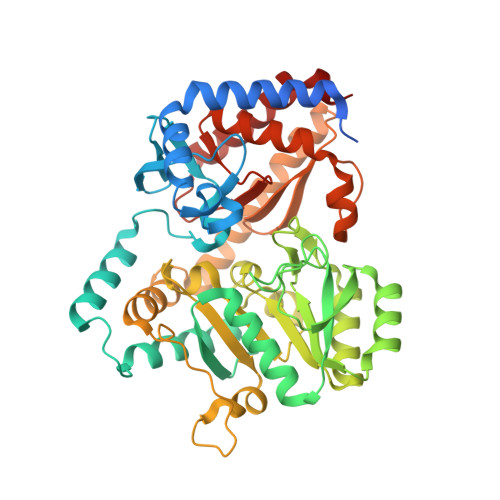Structural determinants of the beta-selectivity of a bacterial aminotransferase.
Wybenga, G.G., Crismaru, C.G., Janssen, D.B., Dijkstra, B.W.(2012) J Biological Chem 287: 28495-28502
- PubMed: 22745123
- DOI: https://doi.org/10.1074/jbc.M112.375238
- Primary Citation of Related Structures:
2YKU, 2YKV, 2YKX, 2YKY, 4AO4 - PubMed Abstract:
Chiral β-amino acids occur as constituents of various natural and synthetic compounds with potentially useful bioactivities. The pyridoxal 5'-phosphate (PLP)-dependent S-selective transaminase from Mesorhizobium sp. strain LUK (MesAT) is a fold type I aminotransferase that can be used for the preparation of enantiopure β-Phe and derivatives thereof. Using x-ray crystallography, we solved structures of MesAT in complex with (S)-β-Phe, (R)-3-amino-5-methylhexanoic acid, 2-oxoglutarate, and the inhibitor 2-aminooxyacetic acid, which allowed us to unveil the molecular basis of the amino acid specificity and enantioselectivity of this enzyme. The binding pocket of the side chain of a β-amino acid is located on the 3'-oxygen side of the PLP cofactor. The same binding pocket is utilized by MesAT to bind the α-carboxylate group of an α-amino acid. A β-amino acid thus binds in a reverse orientation in the active site of MesAT compared with an α-amino acid. Such a binding mode has not been reported before for any PLP-dependent aminotransferase and shows that the active site of MesAT has specifically evolved to accommodate both β- and α-amino acids.
- Laboratory of Biophysical Chemistry, University of Groningen, 9747 AG Groningen, The Netherlands.
Organizational Affiliation:


















